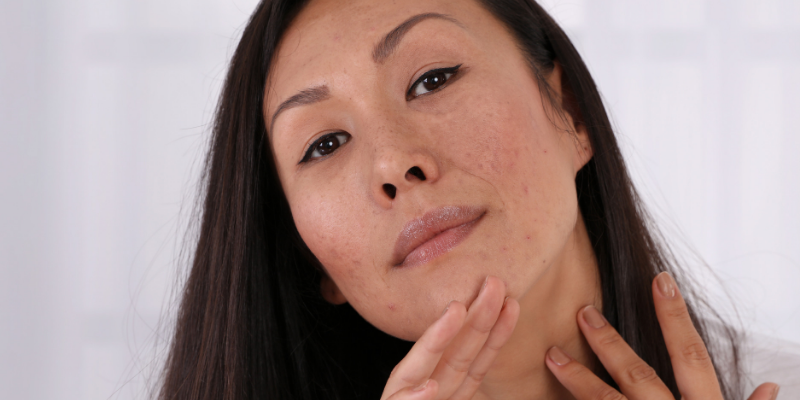Why Is My Skin Discolored after Acne?

Have you noticed dark spots or patches of skin develop on your face after clearing up acne? How about a dark spot somewhere on your body after getting a cut or another skin injury? This is a specific type of hyperpigmentation called post-inflammatory hyperpigmentation and is a common issue among pigmented skin types.
Many patients ask me what they can do about discolored skin after acne. This guide breaks down the root causes of this type of hyperpigmentation, as well as how to treat it and even prevent it from happening in the future.
What Causes Post-Inflammatory Hyperpigmentation?
Post-inflammatory hyperpigmentation or PIH appears on the skin in areas where inflammation has occurred. It is characterized by darker spots or patches of skin than the surrounding areas, ranging in color from red and pink to brown or black. PIH can occur after any cause of inflammation, including cuts, scrapes, ingrown hairs, and bug bites, but acne is one of the most common causes, especially on the face.
Inflammation is your body’s natural response to these injuries. However, as the skin starts to heal, too much melanin is sometimes produced in the process, leaving you with dark spots in place of the injury.
It is important to note that PIH is not the same as an acne scar. Often called “pseudo scarring,” PIH does not damage the structure of the skin and results in a flat area of discoloration. Acne scars, on the other hand, are pitted or raised and are therefore more difficult to treat and usually require in-office treatments like dermal fillers, lasers, or microneedling.
Who Gets Post-Inflammatory Hyperpigmentation?
Anyone can get post-inflammatory hyperpigmentation, but pigmented skin types are more prone to this problem. Spending lots of time in the sun without sunscreen or protective clothing can also increase your risk of developing dark spots in place of cuts and acne.
How Is PIH Treated?
The good news is that PIH is generally easier to treat than acne scars and sometimes even fades away on its own. However, it can take several months or even years for these spots to fully fade, and some do not go away on their own at all.
To treat post-inflammatory hyperpigmentation, skin lightening ingredients like hydroquinone, kojic acid, and vitamin C are often used and can be very effective. Be careful to only apply these products to the dark spots to avoid lightening other areas of your skin.
Retinoids and alpha hydroxy acids can also help pigmented spots to fade away. These ingredients accelerate the skin’s desquamation or exfoliation process, helping new non-pigmented skin cells to reach the surface of your skin more quickly.
Is PIH Preventable?
Yes! There are measures you can take to minimize your chances of developing PIH.
- Do not pick at acne lesions and avoid popping pimples. If you absolutely must pop a pimple, do so correctly to reduce the likelihood of scarring and PIH.
- Follow your dermatologist’s prescribed skincare regimen for managing acne.
- Stay out of the sun whenever possible, and wear sunscreen on a daily basis.
- Use anti-inflammatory skincare ingredients such as pure argan oil, found in products such as PAORR.
- Keep your skin properly moisturized if you are a dry skin type.
In Summary
Post-inflammatory hyperpigmentation is a frustrating problem for many pigmented skin types. Fortunately, there are many treatment options that can help you achieve an even, healthy-looking complexion. Keep in mind that these treatments can take time to yield full results, so stick with your prescribed regimen, even if it doesn’t seem to be working on the surface. With time, you should begin to notice dark spots fading, revealing the beautiful, even skin tone underneath.
©2019 Metabeauty, Inc.


